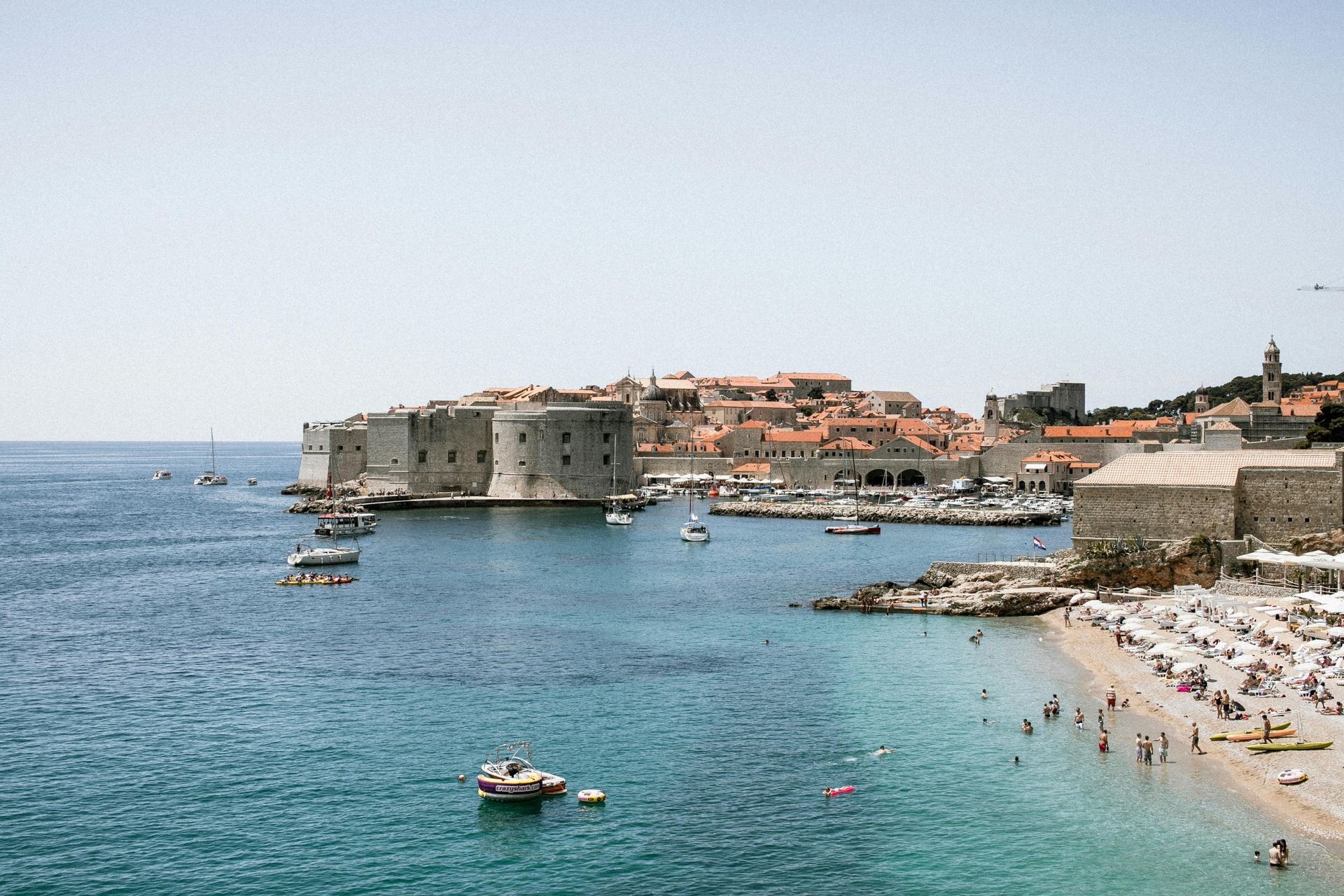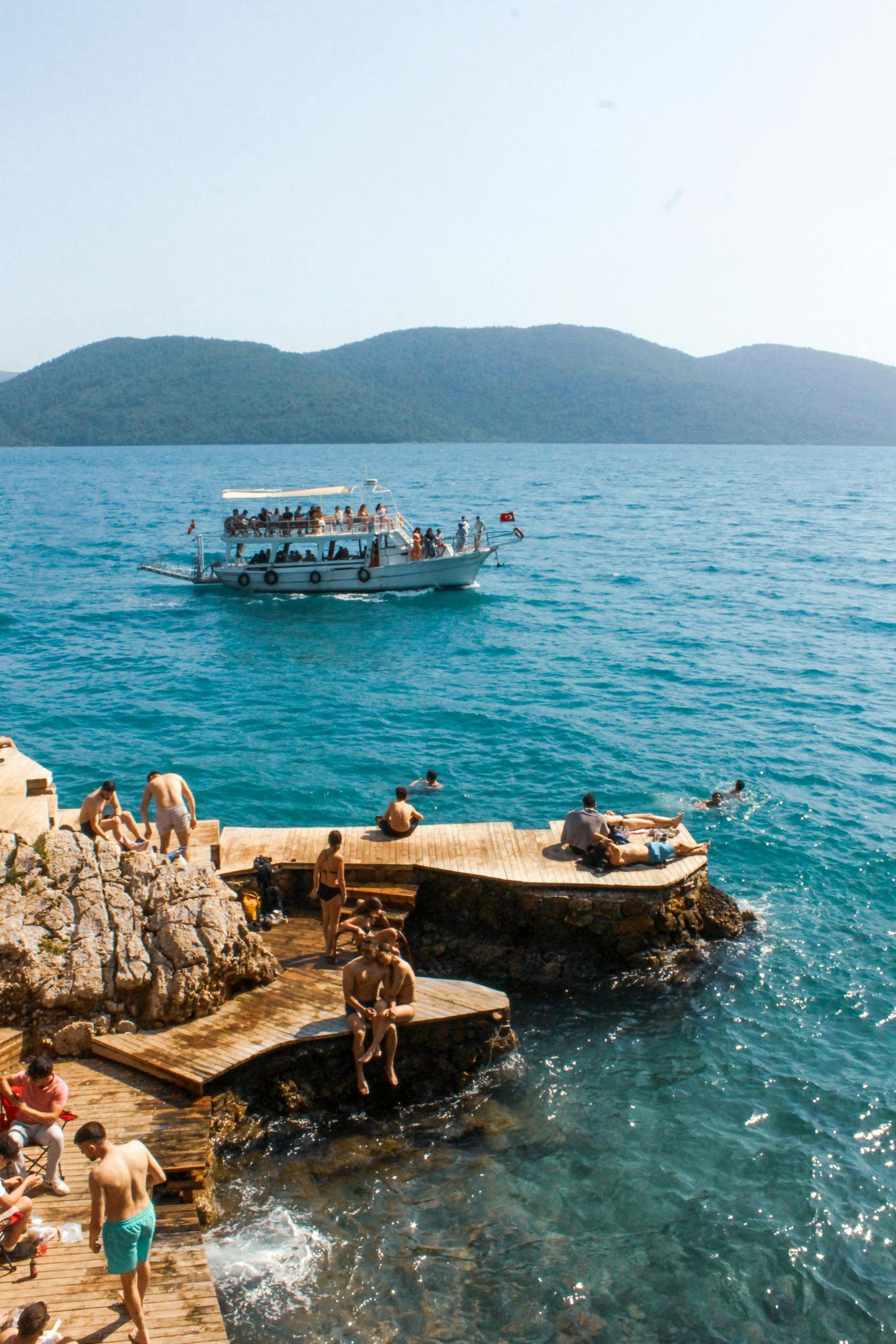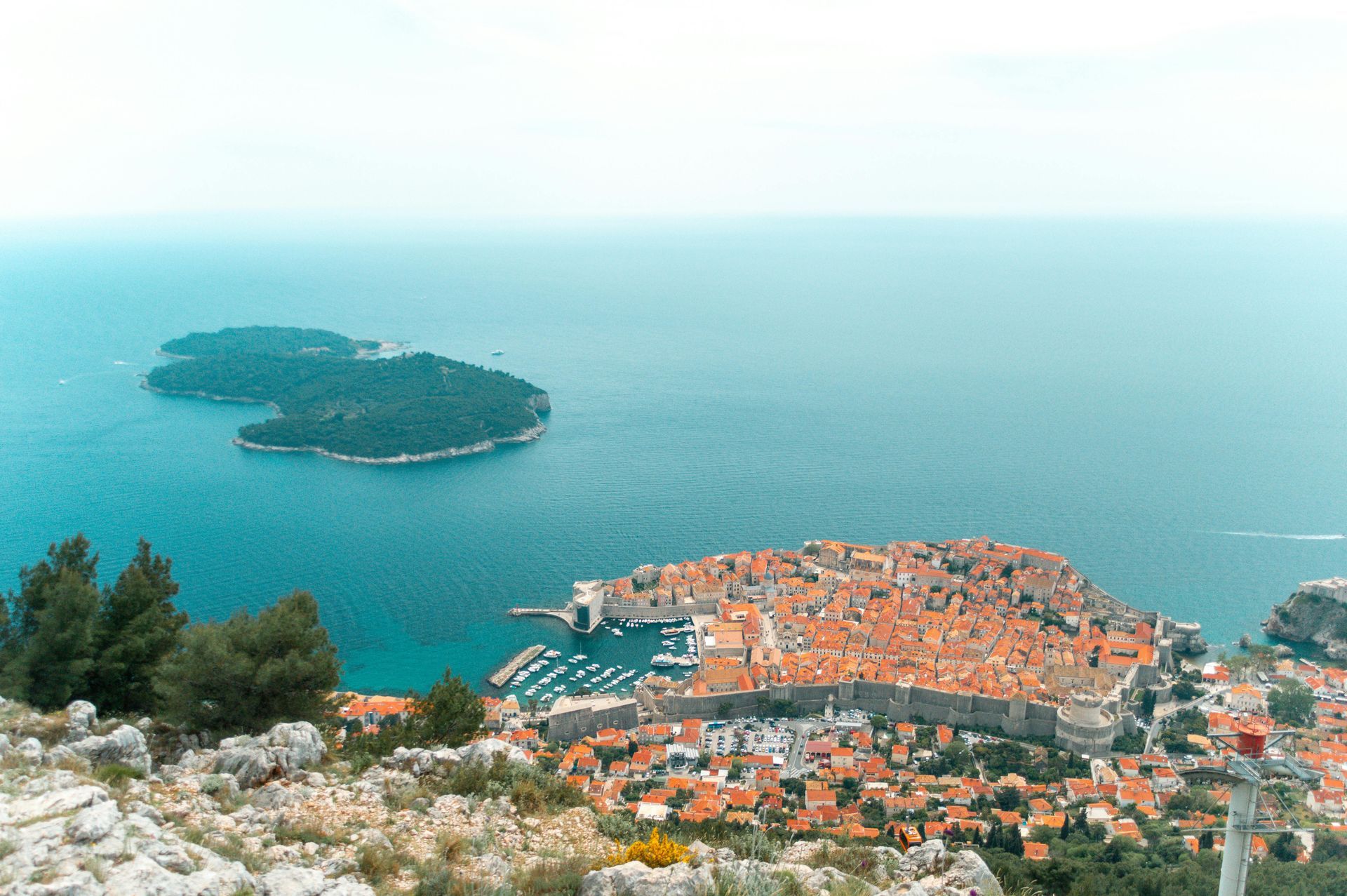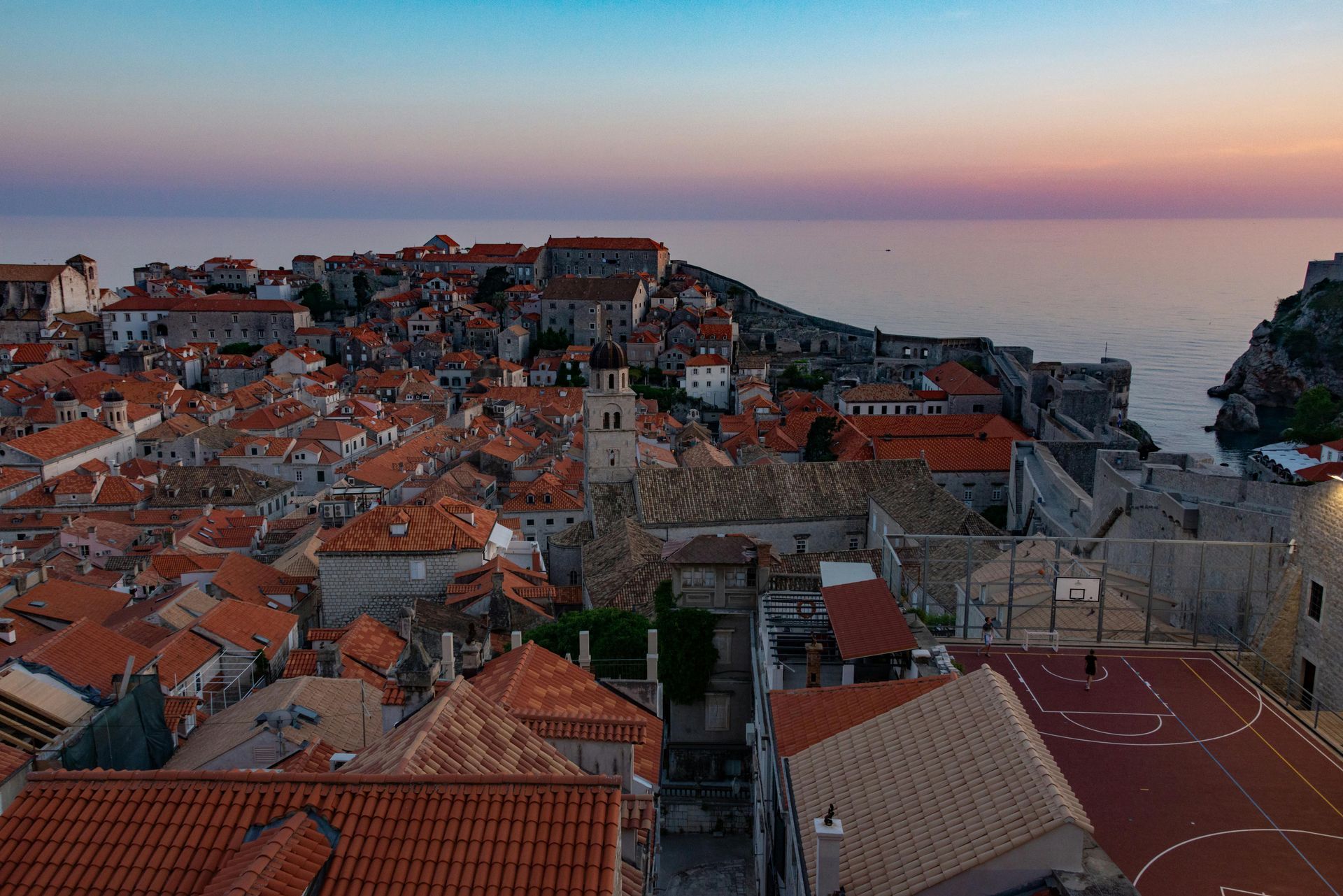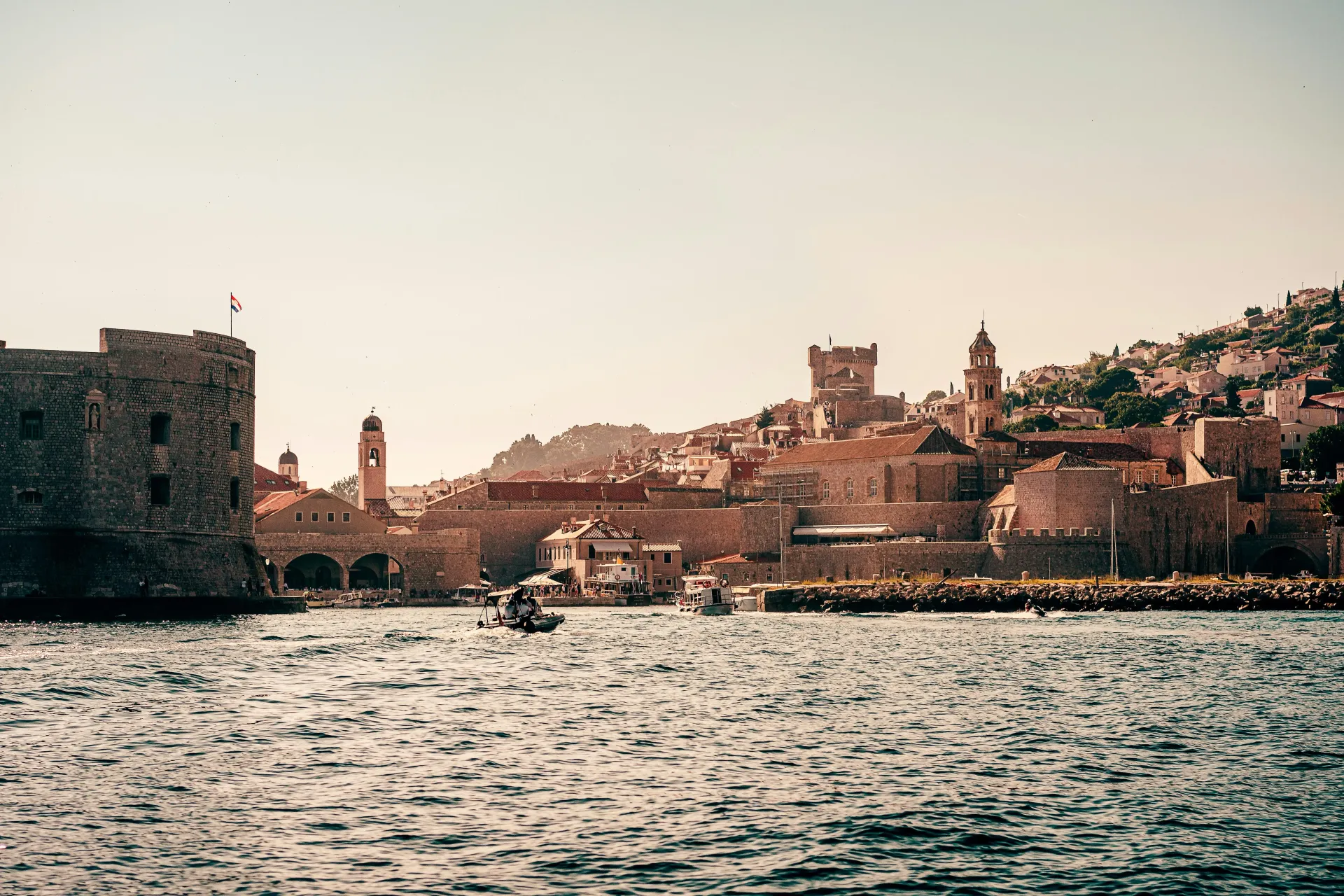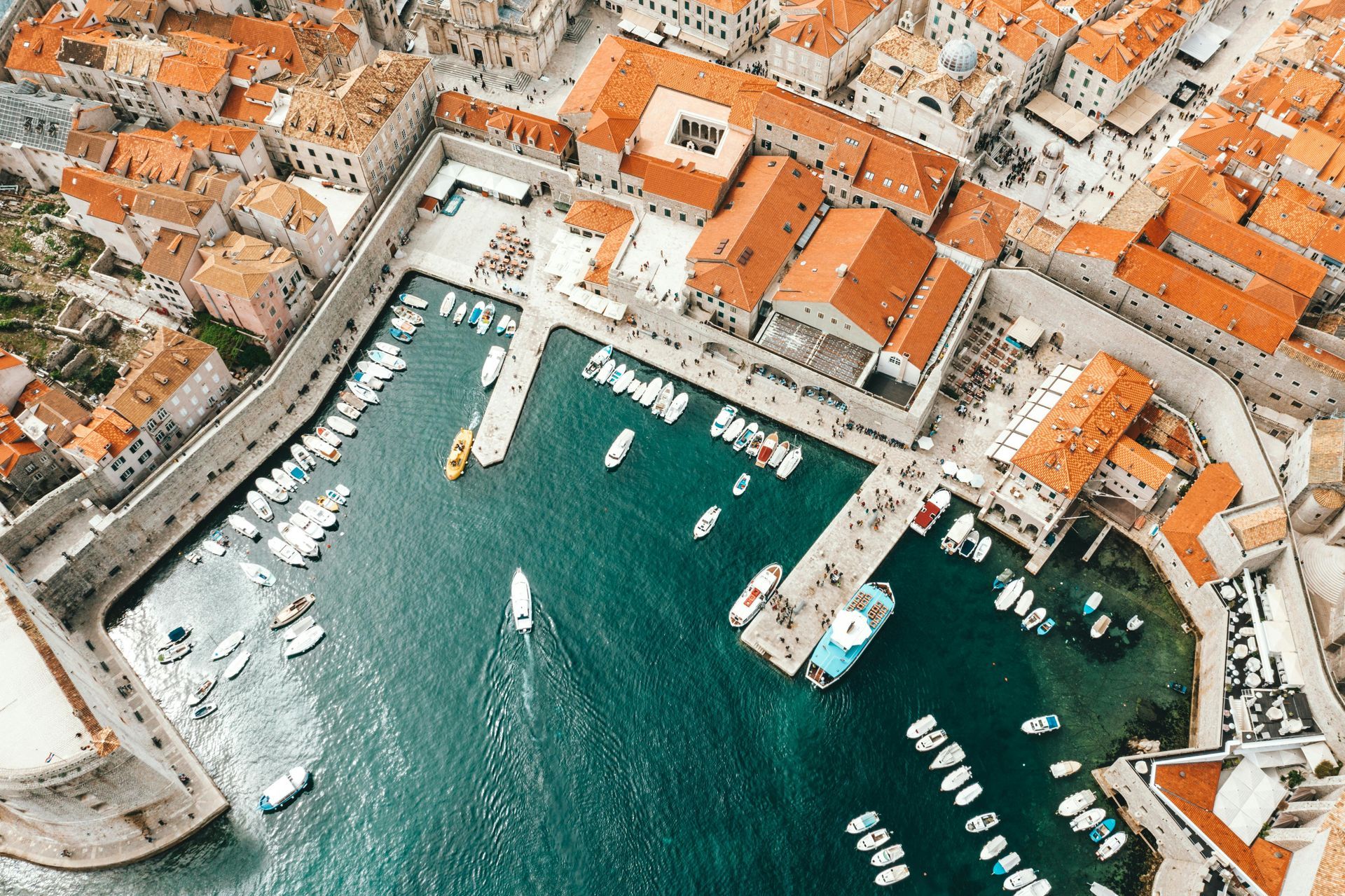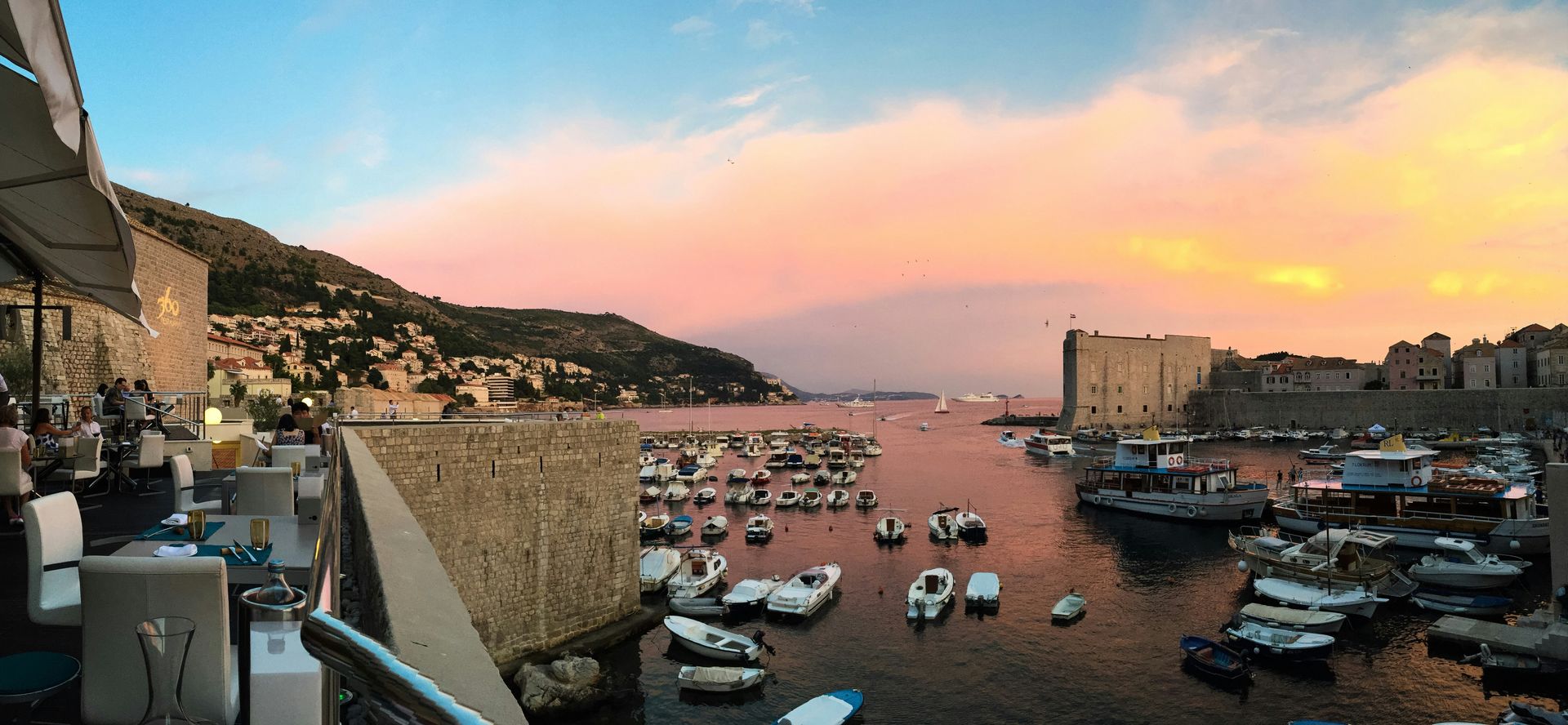Is It Safe to Swim Around Dubrovnik’s Islands?
Swimming in Croatia brings a delightful experience as sea temperatures reach a pleasant 25–26°C (77–79°F) during peak summer months. Winter waters drop to around 14°C (55°F). The swimming season runs from late May through early October and the Adriatic Sea stays warm enough for comfortable dips.
The waters around Dubrovnik's islands should top your list for the best swimming spots in Croatia. Crystal clear waters of the Adriatic Sea allow visibility up to 50 feet down. Swimming becomes most enjoyable from July to September when water temperatures peak. Boat tours hosted in the region provide chances for two daily swims between 2 and 3 kilometers each along the limestone islands' shorelines. Note that some areas need confident swimming abilities since spots exist with no lifeguards where you cannot touch the bottom.
Understanding the Sea Conditions Around Dubrovnik
Swimming in the azure waters around Dubrovnik's islands becomes more enjoyable when you know what to expect. The Adriatic Sea creates perfect swimming conditions for most of the year with its unique characteristics.
Water temperature by season
Swimming temperatures in the Adriatic Sea follow a predictable pattern that helps you plan your adventures better. The sea starts warming up from 13°C (55°F) in March and reaches a pleasant 18°C (64°F) by May. The water temperature rises to about 22-23°C (71-73°F) when June arrives.
July and August bring the warmest swimming conditions with peak temperatures of 25-26°C (77-79°F). The southern Adriatic waters near Dubrovnik stay 8-10°C warmer than northern regions during winter. The sheltered bays and shallow coves around the islands heat up faster compared to deeper, open water areas.
Dubrovnik's waters have a wonderful quality of staying warm through autumn. The sea remains great for swimming at 21-23°C (70-73°F) in September and October, which gives you more time to enjoy your water activities.
Clarity and salinity of the Adriatic
Clear waters of the Adriatic create beautiful blue-green shades that let you see amazing underwater scenes. The water stays exceptionally clear because there's no sand to make it cloudy. Rocky and pebbly beaches help maintain this incredible visibility.
Salt levels in Dubrovnik's waters measure around 38.3 parts per thousand. This number is higher than typical ocean readings of 32-37 PSU. Limited freshwater flow and high evaporation from warm temperatures cause this increased salt content.
Swimmers notice the saltiness right away. The high salt content makes floating easier and gives the water a taste that is different from other Mediterranean spots.
Tides and currents near the islands
The Adriatic Sea has gentle tidal movements compared to oceans. Dubrovnik's daily tidal range measures about 22 cm, and the southern Adriatic rarely sees changes above 40 centimeters. Swimming conditions stay stable throughout the day because of these small tidal shifts.
Water moves in a counter-clockwise pattern along Croatia's coast. Currents usually flow at 0.5 knots but can reach 4 knots in certain weather conditions. These currents stay mild enough to swim comfortably around the islands.
Some channels between islands might have stronger currents when it's windy. The popular swimming spots around Koločep, Lopud, and Šipan islands sit in protected bays where currents stay gentle, which makes swimming safe and fun.
Is It Safe to Swim Around the Islands?
The blue waters around Dubrovnik's islands are some of the most beautiful swimming spots you'll find. Many visitors want to learn about what lies beneath those inviting blue surfaces.
Are there dangerous marine animals?
Swimming in Croatia is generally safe as serious dangers rarely occur. The Adriatic Sea is home to 47 shark species, including Mako and Great White sharks, but you'll almost never see them. The last deadly shark attack happened in 1974 near Omis. The most recent incident was near Vis Island in 2008, which involved a diver carrying freshly caught fish. You might encounter weever fish that hide in sandy areas. These fish can give painful stings if disturbed, but they're rarely dangerous.
How common are sea urchins and jellyfish?
Sea urchins pose the most common minor risk to swimmers in Croatia. These black spiky creatures live around rocky areas and stepping on them hurts. Their spines contain mild venom and can break off in your skin, causing pain. Dubrovnik's pebble beaches and rocks create perfect homes for sea urchins.
The Adriatic waters sometimes have jellyfish. Most cause mild discomfort, but species like the Mauve Stinger can give nasty stings. Dubrovnik's Danče beach raised a red flag in 2022 due to an invasion of Pelagia jellyfish. Medical teams treated eight sting cases in just one morning.
Are lifeguards available?
The Dubrovnik Red Cross places trained lifeguards at four popular spots: Danče, Mandrač, Štikovica, and Šulić starting June 23. This City of Dubrovnik co-funded program helps keep swimmers safe during busy months. Many swimming spots, especially outside marked beach areas, don't have lifeguard protection. This is something to keep in mind when swimming in remote locations.
What about boat traffic and remote areas?
Summer months (June-September) bring heavy boat traffic that creates extra risks for swimmers. Check the weather before swimming, stay near the shore, and think about wearing bright hats or using tow floats to be more visible. Each island has different levels of boat activity. Koločep and Lopud see less traffic, making them safer places to swim.
Best Swimming Spots Around Dubrovnik’s Islands
Dubrovnik's archipelago has some of the best swimming spots in Croatia. Each island has its own charm and crystal-clear waters.
Kolocep: Calm coves and clear water
Kolocep, the smallest inhabited Elaphiti island, features Blue Cave Beach where magical blue light dances on the water. Several sheltered coves line the northeastern shore, making them perfect for morning swims. The afternoon winds can pick up sometimes. The island's car-free environment creates a peaceful atmosphere that makes swimming even more enjoyable.
Lopud: Sunj Beach and sandy entry
Lopud island's crown jewel is Šunj Beach, one of the few sandy beaches in the region. This horseshoe-shaped bay has shallow, warm waters that work great for families. The beach's gradual sandy entry makes it stand out from Croatia's typical pebble beaches. The bay stays protected from strong winds.
Sipan: Quiet bays and scenic swims
Sipan, the largest Elaphiti island, has hidden swimming spots like Suđurađ Bay. The island sees fewer crowds, which lets you experience authentic Croatian swimming among olive groves and vineyards. The rugged coastline creates many quiet spots for a peaceful swim.
Cavtat: Peninsula walks and easy access
Cavtat peninsula sits on the mainland but offers great swimming spots along a scenic walking path that circles the peninsula. You can enjoy amazing views of Dubrovnik's islands while choosing from multiple spots to enter the clear azure waters.
Local Tips for a Safe and Fun Swim
The right timing and preparation create a truly unique swimming experience in Croatia.
When is the best time to swim?
Swimming in Croatia is best from May to early June or September to mid-October if you want to avoid crowds. These shoulder seasons give you warm waters between 65 to 72°F (18–22°C) with fewer tourists around. The Adriatic Sea reaches its warmest temperatures from July through September after soaking up the summer sun.
What to pack: water shoes, towel, sunscreen
Croatia's coastline features rocky shores and pebbly beaches, making water shoes a must-have. A quick-dry microfiber travel towel comes in handy since most places don't give you beach towels. The temperatures often hit above 30°C, so you'll need good sunscreen. A dry bag helps keep your valuables safe while you swim.
How to reach the islands without a car
Getting to the Elaphiti islands is straightforward. Just fly into Dubrovnik Airport (DBV), catch a shuttle to Gruž Ferry Port, and hop on a public ferry. Regular ferries link Dubrovnik to all major islands. Local busses also provide a budget-friendly way to explore Dubrovnik.
Joining a boat tour for safer access
Ready to discover the Adriatic's best spots and swim like a local? Sea Heart of Dubrovnik makes this possible. Boat tours are a great way to get guided access to hidden swimming spots. You'll usually get two daily swims along limestone shorelines, and less confident swimmers benefit from safety supervision.
Pearl of Adriatic
Swimming near Dubrovnik's islands is a magical experience in the Adriatic Sea. You can see up to 50 feet through the crystal-clear waters, which turns every swim into an underwater adventure.
Summer brings perfect swimming conditions as water temperatures reach a comfortable 25-26°C. The Adriatic stays warm enough to swim from late May through early October, which makes the shoulder seasons just as enjoyable.
These beautiful islands are quite safe for swimming. While several shark species live here, you'll rarely see them - years pass between any reported sightings. Sea urchins and jellyfish are the only minor risks you might face. A good pair of water shoes and staying alert will keep you safe.
Each Elaphiti Island has its own swimming spots. Koločep draws visitors with its sheltered coves and the stunning Blue Cave Beach. Families love Lopud's sandy Šunj Beach with its gentle slope into the water. Šipan is perfect if you want a peaceful swim away from the crowds.
Water shoes, quick-dry towels, and sunscreen should be at the top of your packing list. The shoulder seasons are ideal if you want to avoid the summer crowds.
The waters around Dubrovnik create unforgettable memories, whether you swim from the beach or take boat tours along the limestone coast. This place stands out with its perfect blend of swimming conditions, stunning views, and rich cultural heritage. Head over to Croatia and find out why swimming here ranks among the country's most beloved activities!
